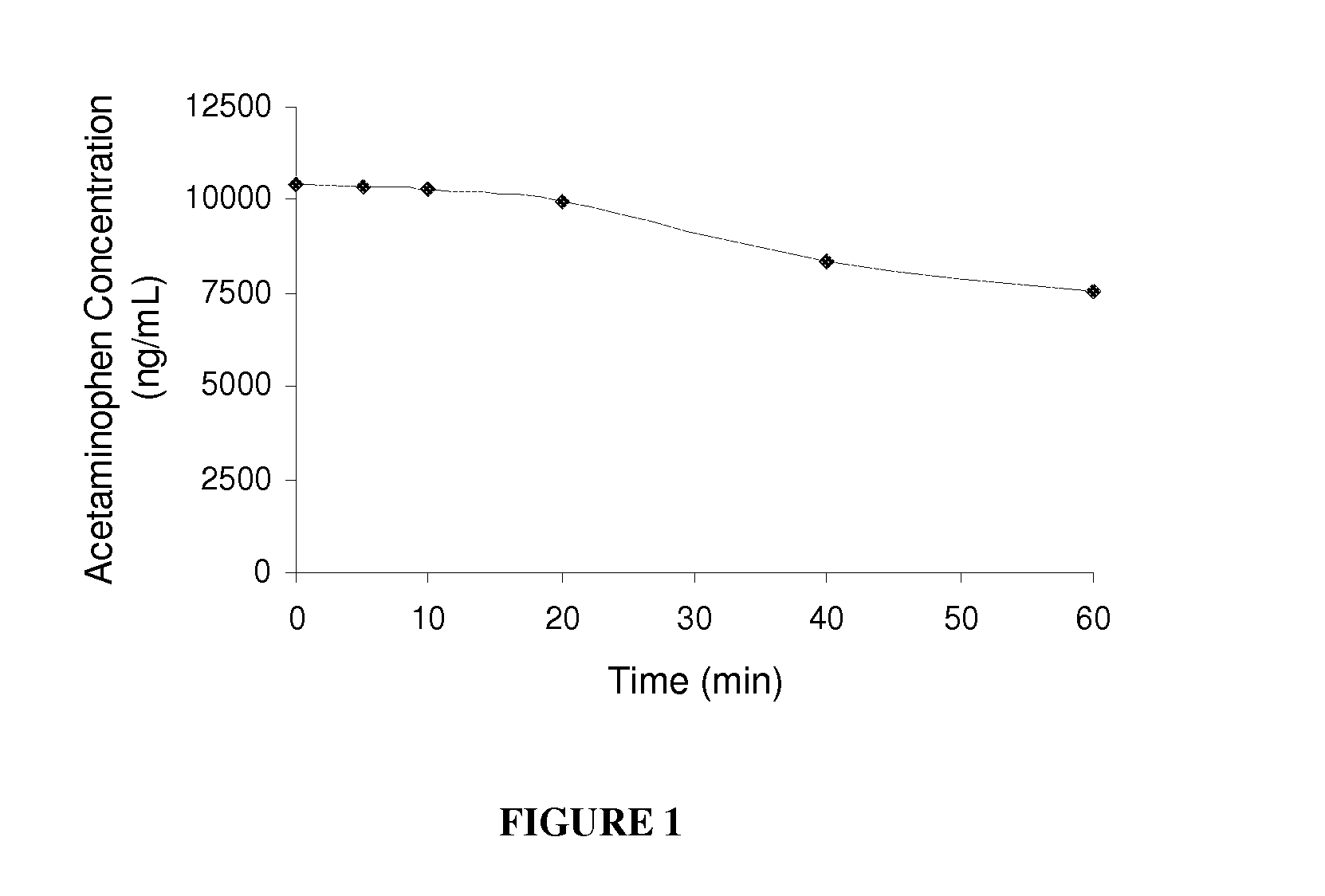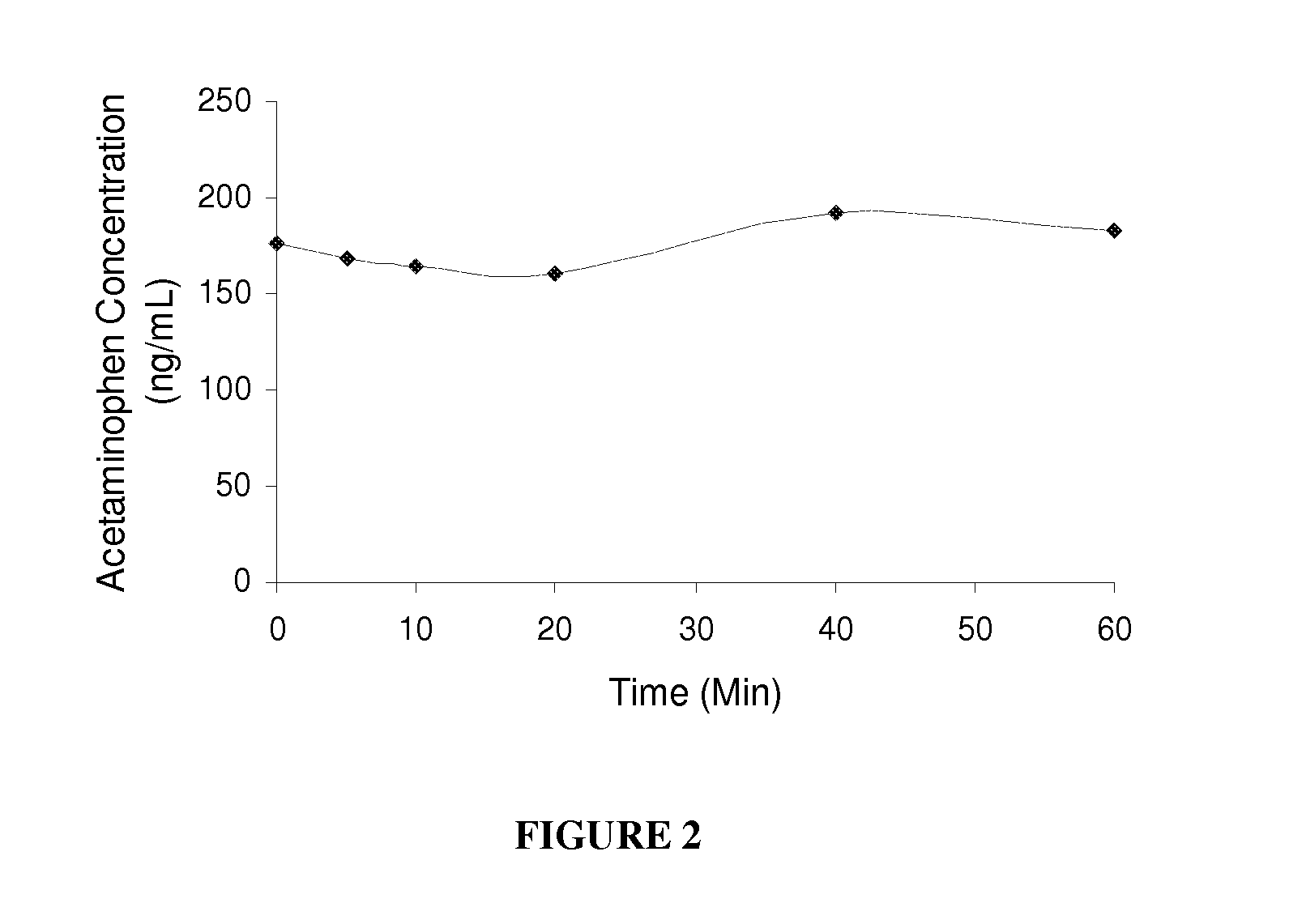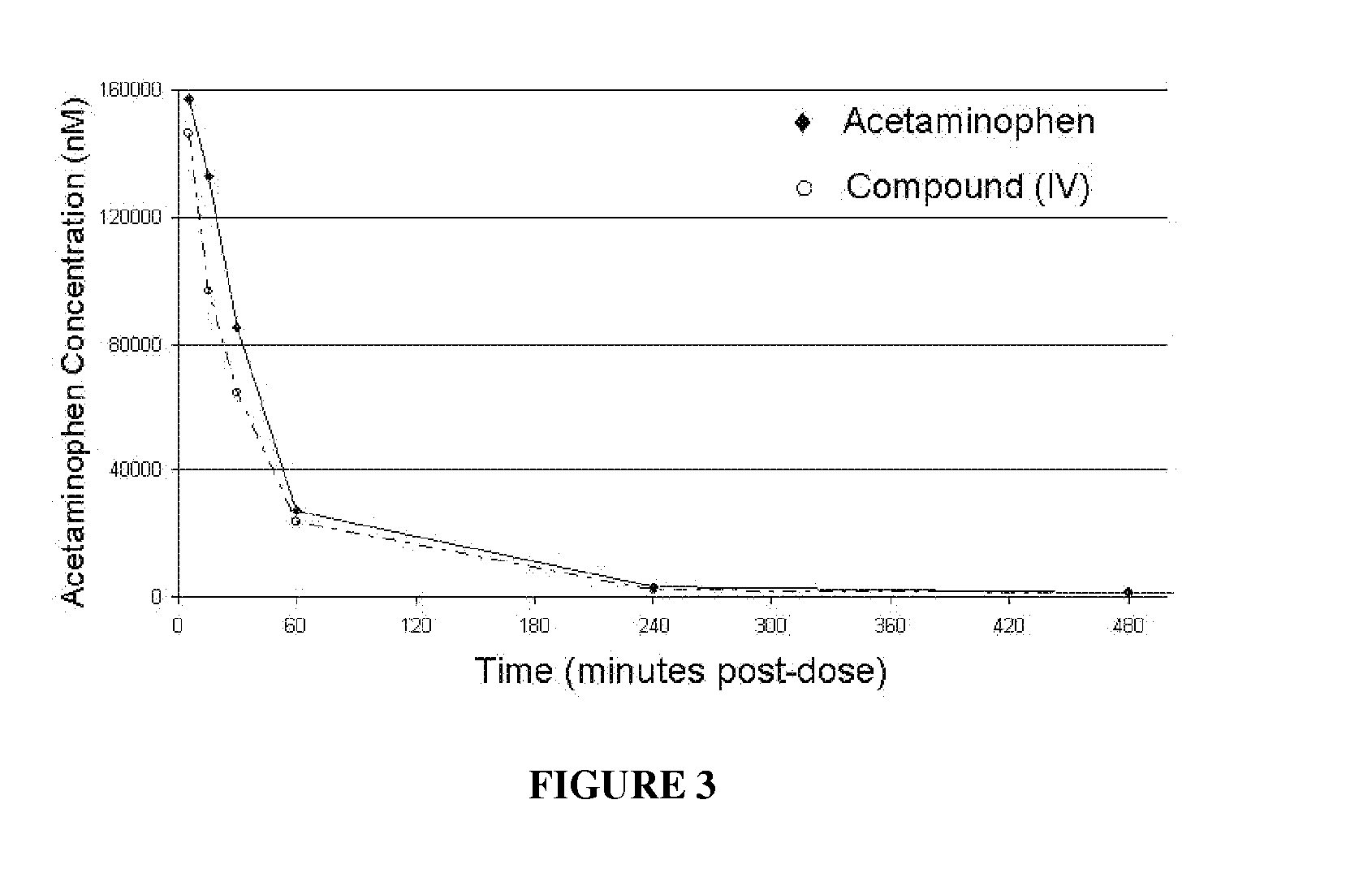Carbonate prodrugs and methods of using the same
a technology of carbonate prodrugs and carbonate sulfate, which is applied in the direction of phosphorous compound active ingredients, drug compositions, biocides, etc., can solve the problems of high dosage and poor pharmacokinetic profiles, difficult drug development, and poor therapeutic utility of certain compounds, so as to prolong the parent drug activity, and slow down the onset of parent drug action.
- Summary
- Abstract
- Description
- Claims
- Application Information
AI Technical Summary
Benefits of technology
Problems solved by technology
Method used
Image
Examples
example 1
Synthesis of (4-acetamidophenyl carbonic) phosphoric anhydride
4-acetamidophenyl carbonochloridate
[0118]
[0119]A solution of 4-acetominophenol (75.0 g), phosgene solution (450 mL, 20% in toluene), and ethyl acetate (1875 mL) was cooled to 0° C. N,N-Diethylaniline (94.7 mL) was added dropwise and the reaction was stirred at 0° C. for two hours. The reaction was then allowed to warm to room temperature. An aliquot for NMR analysis was taken four hours post addition. The reaction remained incomplete and was stirred at room temperature overnight. An-aliquot for NMR analysis after overnight stirring indicated no change had occurred in the reaction since the previous aliquot. The reaction was heated to 40° C. until phosgene gas evolution ceased (approximately 30 minutes). The reaction was cooled to room temperature and was then filtered. The filter cake was washed with ethyl acetate. NMR analysis of the filtered solid indicated it was N,N-diethylaniline related material. The filtrate was wa...
example 2
Carbonate Prodrug Solubility: (4-acetamidophenyl carbonic) phosphoric anhydride
[0126]Solubility of the prodrug (4-acetamidophenyl carbonic) phosphoric anhydride was determined in water, glycerol, and propylene glycol. 10 mg of (4-acetamidophenyl carbonic) phosphoric anhydride was weighed into a vial, small amounts of solvent were added and the mixture was sonicated until a solution formed.[0127]9.9 mg (4-acetamidophenyl carbonic) phosphoric anhydride dissolved in 65 μL water=152 mg / mL.
[0128]10 mg (4-acetamidophenyl carbonic) phosphoric anhydride dissolved in 0.608 g glycerol=20.6 mg / mL (glycerol d=1.25 g / mL).
[0129]10.1 mg (4-acetamidophenyl carbonic) phosphoric anhydride dissolved in 65.6 mg propylene glycol=154 mg / mL (propylene glycol d=1.036 g / mL).
example 3
Carbonate Prodrug Stability in D2O: (4-acetamidophenyl carbonic) phosphoric anhydride
[0130](4-acetamidophenyl carbonic) phosphoric (29.5 mg) was dissolved in D2O (0.7 mL) and monitored by proton NMR. The integration of peaks at 7.8 ppm (corresponding to (4-acetamidophenyl carbonic) phosphoric) and 6.9 ppm (corresponding to acetaminophen) were compared. The half-life of (4-acetamidophenyl carbonic) phosphoric under these conditions was found to be about 90 minutes. The data are summarized in Table 1.
TABLE 1(4-acetamidophenyl carbonic) phosphoric anhydride in water atroom temperatureRemainingTime (min)Prodrug394.4%990.3%1486.4%2975.7%3970.9%4965.6%6061.0%7555.5%9050.6%10546.0%12041.7%14636.7%18829.3%27020.2%37513.9%42011.7%4958.4%8403.0%14101.4%
PUM
| Property | Measurement | Unit |
|---|---|---|
| volume | aaaaa | aaaaa |
| volume | aaaaa | aaaaa |
| volume | aaaaa | aaaaa |
Abstract
Description
Claims
Application Information
 Login to View More
Login to View More - R&D
- Intellectual Property
- Life Sciences
- Materials
- Tech Scout
- Unparalleled Data Quality
- Higher Quality Content
- 60% Fewer Hallucinations
Browse by: Latest US Patents, China's latest patents, Technical Efficacy Thesaurus, Application Domain, Technology Topic, Popular Technical Reports.
© 2025 PatSnap. All rights reserved.Legal|Privacy policy|Modern Slavery Act Transparency Statement|Sitemap|About US| Contact US: help@patsnap.com



